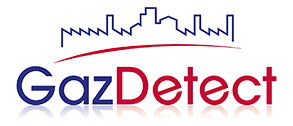
On February 1, 2021, new OELs - occupational exposure limit values - come into force in France. These modifications or additions of new TWA (time-weighted average) exposure thresholds to chemical agents and dust meet European requirements for the protection of workers in hazardous environments.
February 2021 new OELs come into force
Published in the Official Journal at the end of 2020, Decree 2020-1546 of December 9, 2020 sets new binding OELs for certain chemical agents. The regulation protecting exposed workers is therefore modified for 9 substances, integrates 5 new OELs and comes into force on February 1, 2021.
- New binding OELs: wood dust, monomeric vinyl chloride, hexavalent chromium and its compounds, refractory ceramic fibers classified as carcinogenic, silica (alveolar dust of quartz, cristobalite and tridymite).
- Binding OELs changes: Acrylamide, Bromoethylene, 1,3-butadiene, 1,2-epoxypropane (propylene oxide), formaldehyde, hydrazine, 2-nitropropane, ethylene oxide, o-toluidine.
The new OELs as of February 1, 2021
|
CAS |
OEL 8h |
Short term OEL |
|
|
Acrylamide |
79-06-1 |
0,1 mg/m3 |
|
|
Wood dust |
|
1 mg/m3 |
|
|
Bromoethylene |
593-60-2 |
1 ppm |
|
|
1,3 butadiene |
106-99-0 |
1 ppm |
|
|
Monomeric vinyl chloride |
75-01-4 |
1 ppm |
|
|
Hexavalent chromium and its compounds |
|
0,001 mg/m3 |
0,005 mg/m3 |
|
1,2-epoxypropane (propylene oxide) |
75-56-9 |
1 ppm |
|
|
Refractory ceramic fibers classified as carcinogenic |
|
0,01 fibers per cm3 |
|
|
Formaldehyde* |
50-00-0 |
0,3 ppm |
0,6 ppm |
|
Hydrazine |
302-01-02 |
0,01 ppm |
|
|
2-nitropropane |
79-46-9 |
5 ppm |
|
|
Ethylene oxide |
75-21-8 |
1 ppm |
|
|
o-toluidine |
95-53-4 |
0,1 ppm |
|
|
Silica (quartz dust) |
|
0,1 mg/m3 |
|
|
Silica (cristobalite dust) |
|
0,05 mg/m3 |
|
|
Silica (tridymite dust) |
|
0,05 mg/m3 |
|
*Limit value of 0.5 ppm for the healthcare, funeral and embalming sectors until July 11, 2024.
What are binding OELs?
The occupational exposure limit value (OEL) is a measure of protection for the workers health which sets the maximum exposure level (time-weighted average) to hazardous substances. Binding OELs for some chemical agents are defined in Article R. 4412-149 of the French Labor Code. These safety measures are divided into two exposure times for certain substances: the long-term OEL - TWA (over an 8-hour exposure period) and the short-term OEL - STEL (15-minutes exposure).
Unlike indicative OELs, binding occupational exposure limit values force employers to comply with these worker protection measures. Compliance with these regulations may result in the use of personal respiratory protective equipment such as gas masks. In many cases, these safety requirements also require implementation of protocols and solutions for measuring gases and chemical agents such as portable, fixed gas detectors, or the use of reagent tubes.
Compliance with the February 2021 new OELs
Gas detection equipment compliance
As part of these changes to OELs on February 1, 2021, some gas detection equipment requires compliance. Whether it is a portable gas detector or a fixed detector, the monitoring device will need to be reconfigured.
For example, for the long-term OEL:
- The alarm threshold of a formaldehyde detector will drop to 0.3 ppm
- The alarm threshold of a hydrazine detector will drop to 0.01 ppm
- And the alarm threshold of an ethylene oxide detector will drop to 1 ppm
When necessary, gas controllers, fixed transmitters, and portable gas monitoring devices will require reconfiguration accompanied by a software update. Finally, the concerned portable devices and fixed gas detectors will have to be recalibrated following the February 1, 2021 OEL change.
For some connected equipment ranges, such as the Blackline Safety gas detectors, threshold changes can be made remotely with a few clicks, without going through a calibration station, for your entire fleet of the brand’s devices.
Reminder on respiratory protection & OELs
The new OELs provide a reminder, first of all on the dangerousness of exposure to these substances, and secondly to remind all stakeholders that respiratory protection solutions are available to deal with these dangers. Considering OEL compliance as a minimum prevention objective, many preventive measures must be implemented to minimize risks. With this in mind, various respiratory protection equipment can be made available to teams in order to improve their safety level.
Thus, looking at the February 2021 new OEL list, we can see that wearing a dust mask offers additional protection against silica and wood dust exposure dangers.
Likewise, the use of a gas mask, whether it is a half-mask or a full-face mask, can better cope with the danger of substances affected by the OEL changes. However, choosing the right gas mask filter is essential. For example, this will involve using a class P3 filter for maximum filtering protection against dusts (wood, silica), using a type AX filter for protection against ethylene oxide, and use a type K gas filter for protection against formaldehyde and hydrazine. Wearing a powered air purifying respirator, using the appropriate filter, will provide a more comfortable filtering protection (since the breathing effort on the filter is made by the machine and not by its user).
Finally, beyond occupational exposure limits set by law, all supplied air respirator solutions allow workers to operate in atmospheres polluted well beyond the OEL. In an area that is polluted over the OEL, the use of a supplied air respirator mask will provide breathing air from a completely independent source. Likewise, wearing an SCBA (self-contained breathing apparatus) will completely isolate its wearer from contaminated air thanks to the breathing air cylinder connected to the respiratory protection mask.

